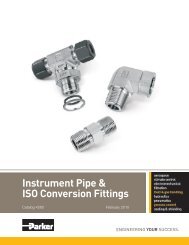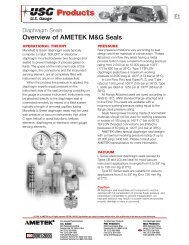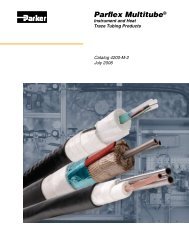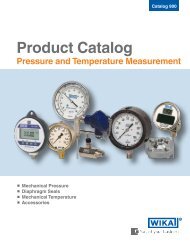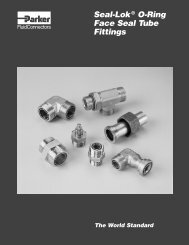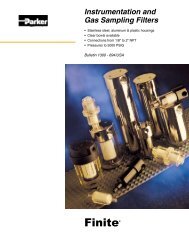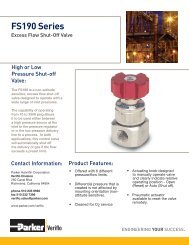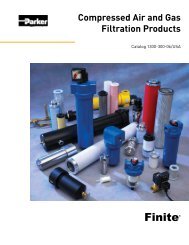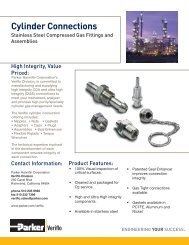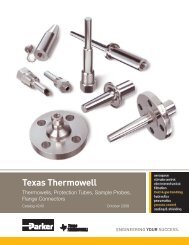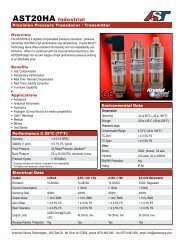You also want an ePaper? Increase the reach of your titles
YUMPU automatically turns print PDFs into web optimized ePapers that Google loves.
Scope of Design (Contd.)How Pressure Relief <strong>Valve</strong>s OperateAll pressure relief valves operate on the principle of inletsystem pressure overcoming a spring load, allowing thevalve to relieve a defined capacity.Figure <strong>1900</strong>.1 - Closedpressure can now act over a larger area, an additional force isavailable to overcome the spring force. By adjusting the“adjusting ring” the opening in the secondary annular orifice canbe altered, thus controlling pressure build-up in chamber (B).This controlled pressure build-up in chamber (B) will overcomethe spring force causing the disc to move away from the nozzleseat and the valve to “pop” open.SpringDiscFigure <strong>1900</strong>.3 - Fully OpenASecondaryAnnular OrificeCWhen the valve is closed during normal operation (SeeFigure <strong>1900</strong>.1), the vessel pressure acting against theseating surfaces (area A) is resisted by the spring force. Asvessel pressure increases, the pressure at (A) tends toequalize the spring force and the pressure holding the seatstogether approaches zero.HuddlingChamberFigure <strong>1900</strong>.2 - Partially OpenPrimary OrificeSecondaryAnnular OrificeHuddlingChamberChamber BDisc HolderAdjusting RingOnce the valve has opened an additional pressure build-up at(C) occurs. (See Figure <strong>1900</strong>.3.) This is due to the sudden flowincrease and the restriction to flow through another annularorifice formed between the inner edge of the disc holder andthe outside diameter of the adjusting ring. These additionalforces at (C) cause the disc to lift substantially at “pop”.Flow is restricted by the opening between the nozzle seat anddisc seat until the disc seat has been lifted from the nozzle seatapproximately one-quarter of the nozzle throat diameter. Afterthe disc has attained this degree of lift, flow is then restrictedby the primary orifice rather than by the area between theseating surfaces.In vapor or gas service the valve may “simmer” before it will“pop”. When the vessel pressure increases to within one totwo percent of the set pressure, media will audibly movepast the seating surfaces into Chamber (B). As a result ofrestriction of flow in the secondary annular orifice, pressurebuilds up in Chamber (B) (See Figure <strong>1900</strong>.2). SinceBlowdown (the difference between opening and closingpressure) can be controlled within limits by positioning thesingle adjusting ring. Blowdown is caused by the result of thespring force not being able to overcome the summation of theforces at (A), (B), and (C) until the pressure at (A) drops belowthe set pressure.<strong>1900</strong>.10 | Dresser Consolidated ®




